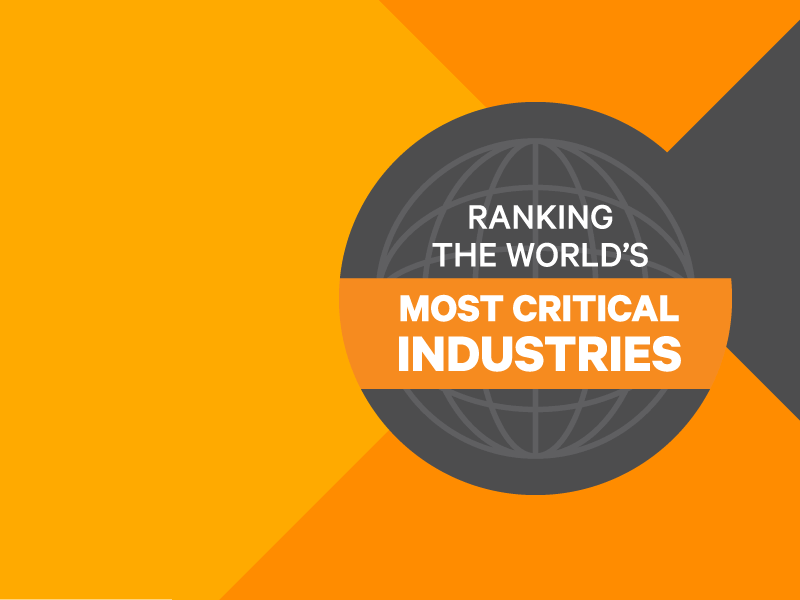When Vertiv evaluated the world’s most critical industries, Utilities ranked number one.
This shouldn’t come as a surprise to data center professionals who deploy high-availability power architectures to protect their equipment from even the slightest disruption in utility power. Despite advances in renewable energy and on-site generation, most data centers still depend on power from the utility grid.
And, the world increasingly depends on data centers—Cloud and Colocation ranked as the fifth most critical industry in our report—and is certainly not alone in its dependence on the grid. Just about every industry we analyzed, from financial services to mass transportation to manufacturing, would be paralyzed by a prolonged power outage. Not only do we directly depend on Utilities in our homes and workplaces, but more and more of the services we use daily in our increasingly digital world depend on Utilities.
This fundamental dependence, and the resulting consequences of a disruption, made Utilities the clear leader in our ranking.
Yet, like other critical industries, many of us take the availability of electrical power for granted. Few of you who are reading this on your computer woke up this morning wondering whether or not you would experience an electrical outage today.
This is impressive when you consider the complexity of the electrical grid. Recently called the “largest interconnected machine on Earth” by Scientific American, the U.S. grid, according to the magazine, consists of “more than 7,000 power plants, 55,000 substations, 160,000 miles of high-voltage transmission lines and millions of miles of low-voltage distribution lines.”
This network of interdependent digital and physical systems must work together to supply the demand for power while it evolves to adapt to changes in technology and energy sources. As any data center manager who has attempted to modernize a legacy facility, it is no small feat to implement technology, as the Utility industry is doing with smart grid technology, without disrupting services.
Yet, as the Vertiv Power Outage Reporter, a compilation of publicly reported power outages in the U.S., shows, the industry has been largely successful in its early effort to modernize the grid. While not infrequent, most outage events are limited in scope and many are weather related.
In addition to the deployment of smart grid technology, the Utility industry is having to adapt to changes in the fuel sources being used to create energy, most notably natural gas and renewable energy, which some believe could ultimately compromise reliability.
But, while the industry appears to be managing this change effectively, another potentially more serious threat looms: digital security. As the grid becomes more dependent on computers, it becomes more vulnerable to cyber attacks, such as the successful 2015 attack on the power grid in Ukraine. Like every industry that is connecting devices across the network and becoming more digitized, Utilities must now develop plans to secure their networks against an unpredictable threat: cyber terrorists.
The good news is the grid is more reliable today than it’s ever been. The bad news is, it is virtually impossible to prevent isolated failures in such a widespread, complex and exposed system—and new threats are emerging on the horizon.
With so many critical industries dependent on the grid, the need for critical infrastructure to protect systems from being effected by disruptions in power remains critical to our ability to continue to use technology to improve how we work and live.




